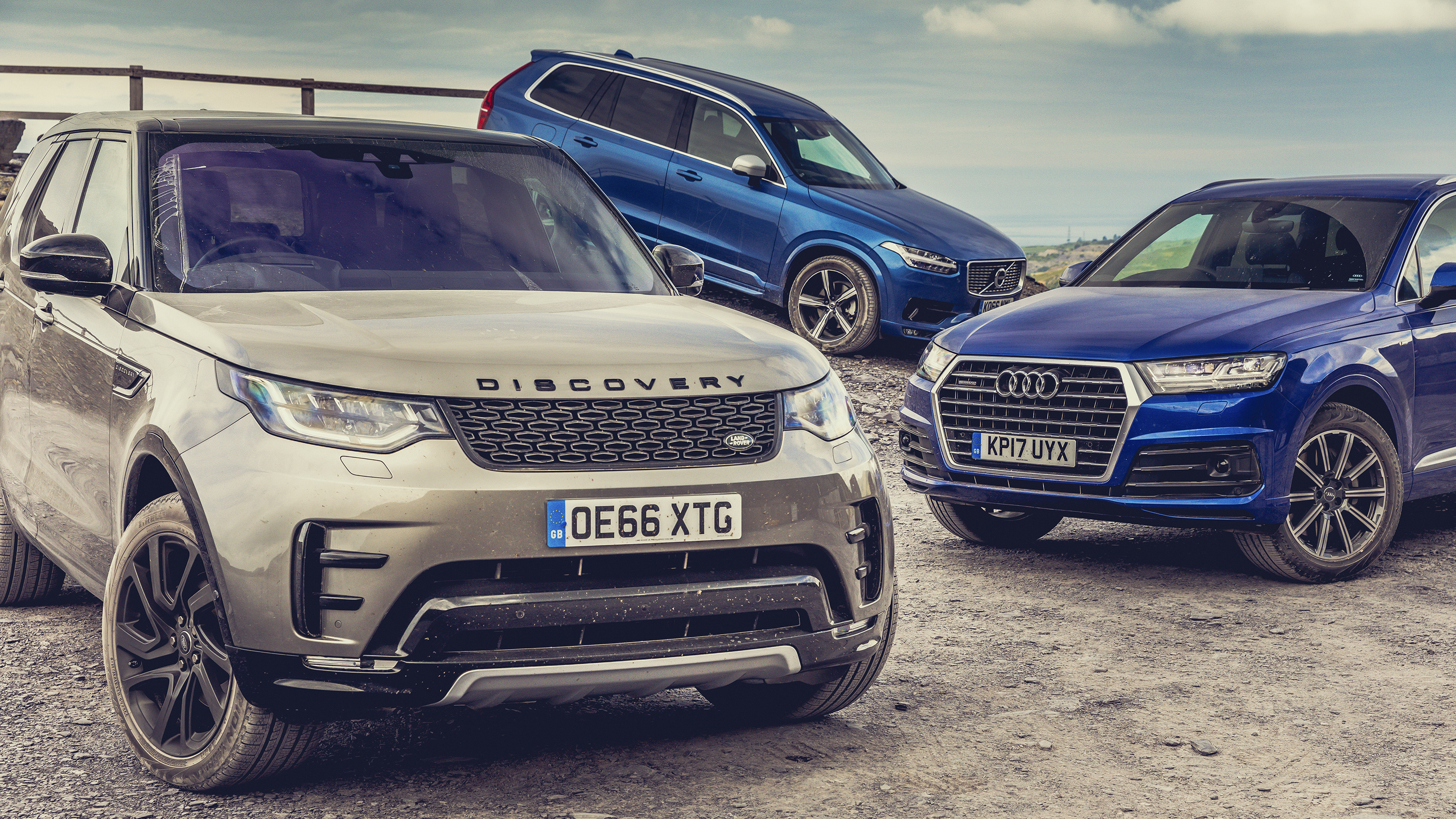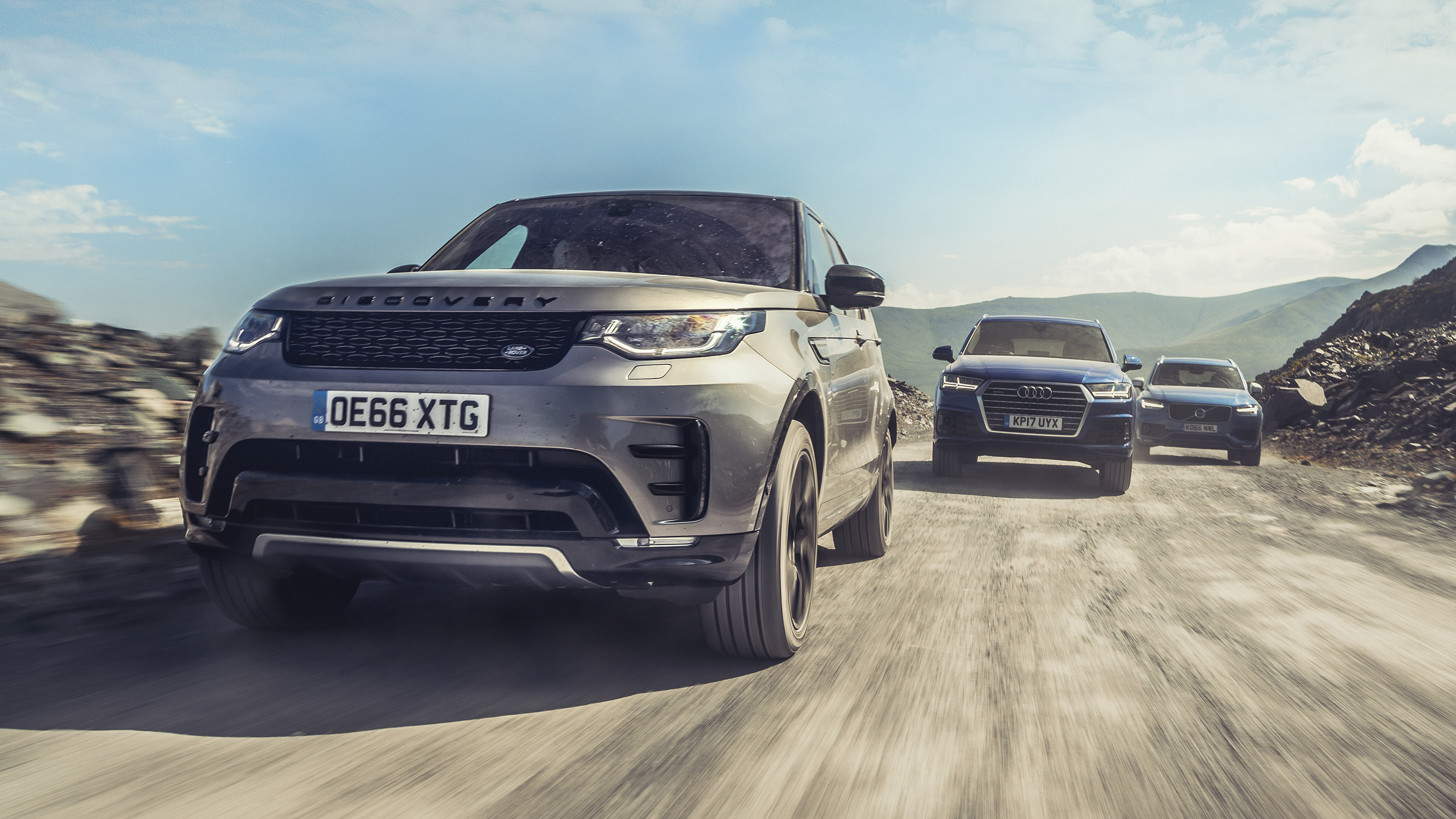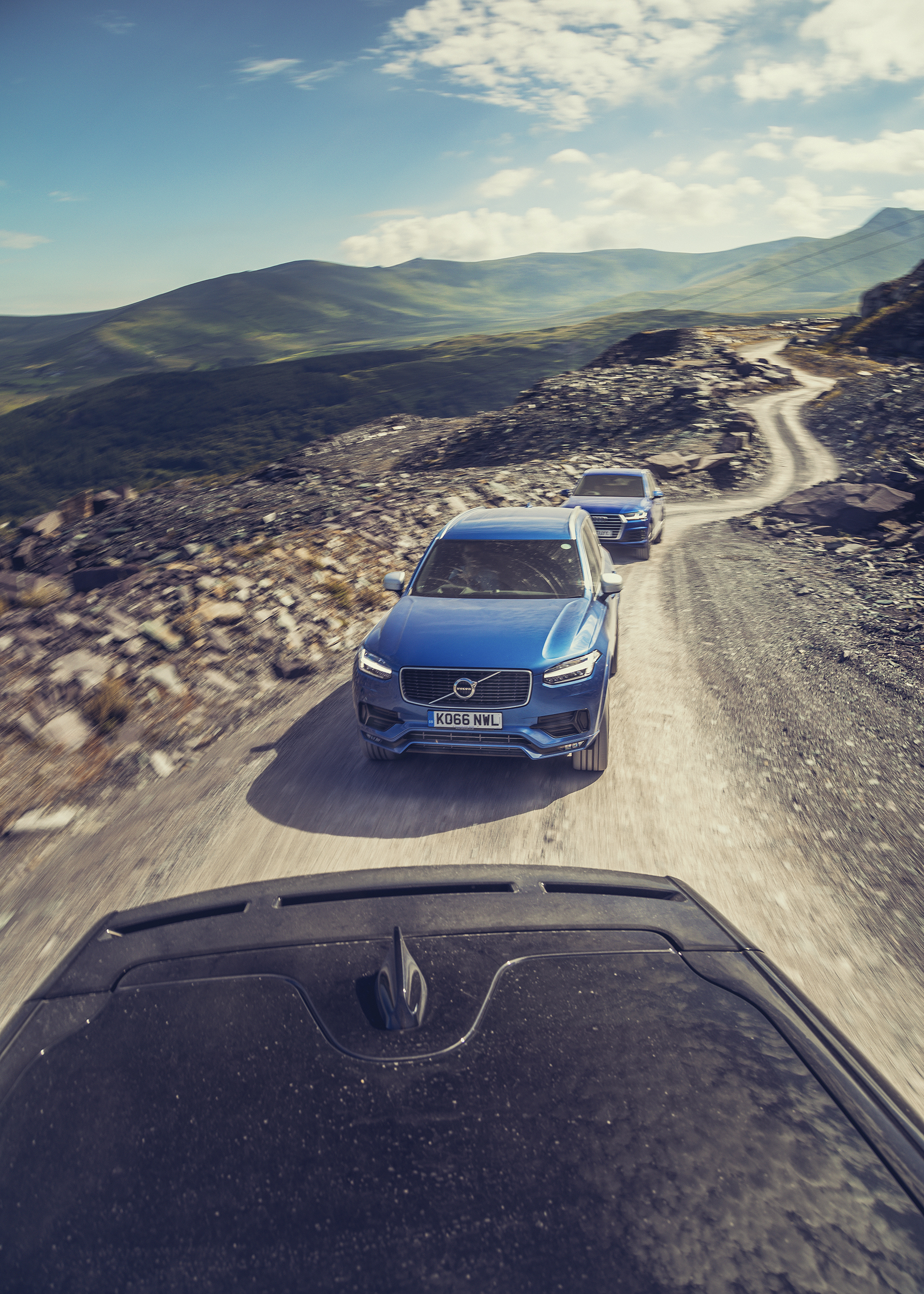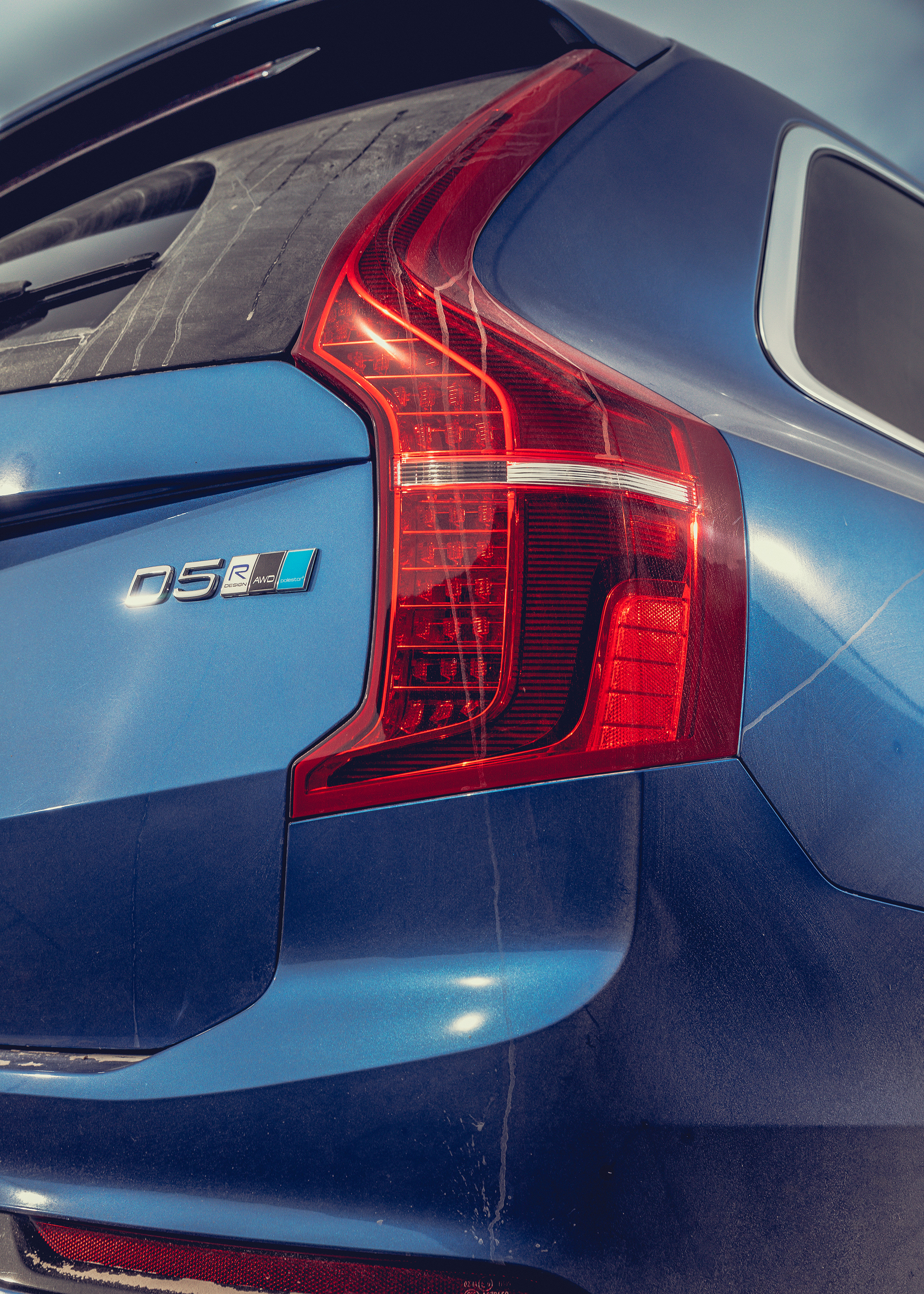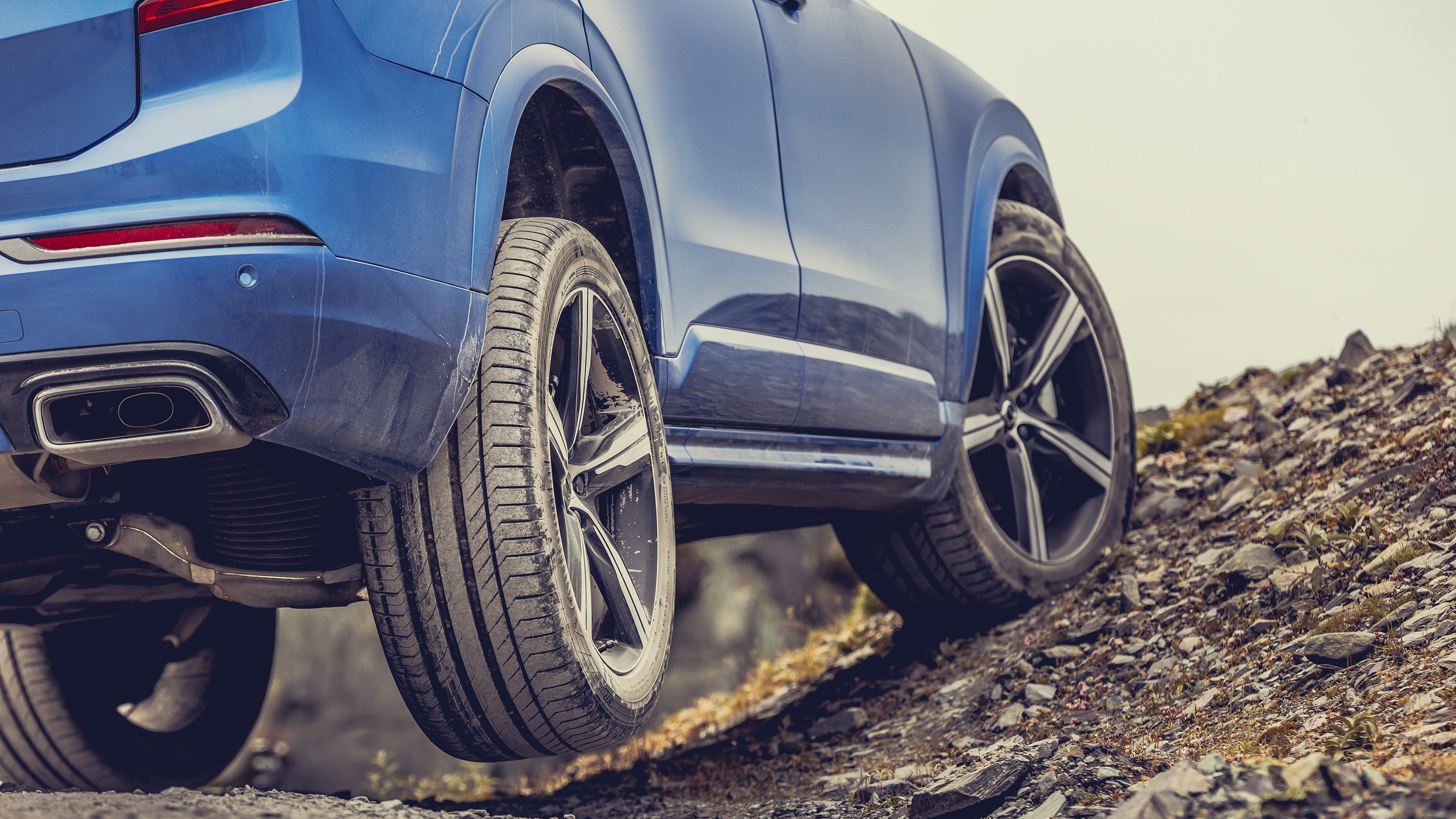
Land Rover Discovery vs Audi Q7 vs Volvo XC90
Three very different ways of transporting seven around in high-riding luxury. But which is king?
Sorry, but there’s a limit to how helpful we can be here. Sure, these are all nominally seven-seat off-roaders with diesel automatic powertrains and a heavy dose of poshness, but they don’t exactly compete head-on.
Choosing sensibly between them needs you to be honest about your priorities. Remember, a Smart, a Ford F150 pickup and a McLaren 720S are all two-seat rear-drive petrol autos, but we’d need to know your use-case before we could make a recommendation between them.
Words: Paul Horrell/Images: Mark Riccioni
The Discovery has long been the world’s greatest do-it-all family vehicle. It’ll conquer mountainous terrain, haul brutal loads and cruise the longest highways, while offering a seven-pax haven within.
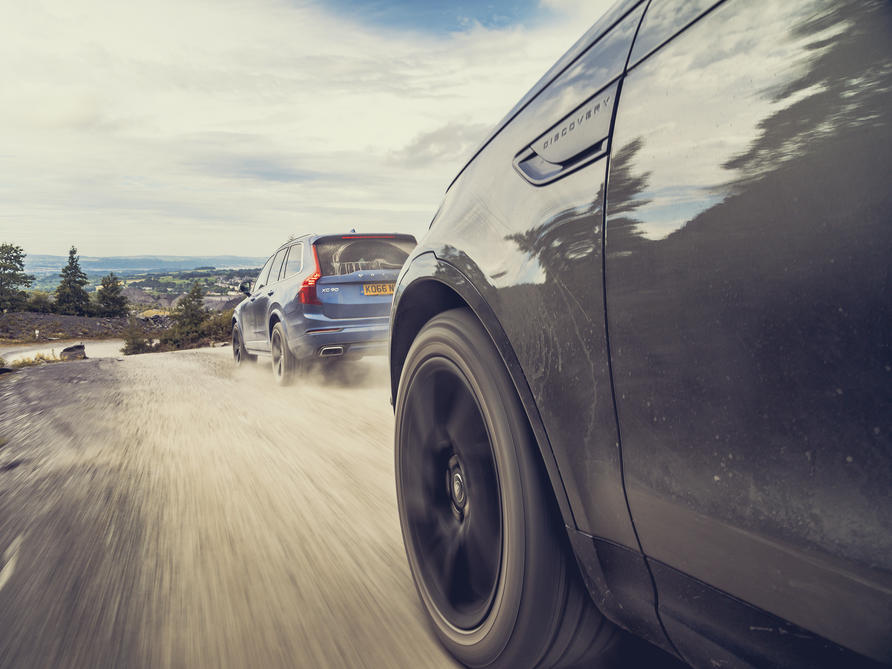
But that all brings compromises of weight, bulk and cost. The Volvo XC90 uses a transverse engine to package lots of passenger space and versatility in a more modest and road-biased envelope. The lower-slung Audi Q7 loses out on space, but in compensation it feels like a German luxury estate.
We’ve always been rather turned on by big German estates, but the Audi board drifted off to sleep on the day the Q7’s styling was presented to them. It’s too mimsy to act the real off-roader, but too graceless to be an Avant. It’s stuck between the two, and its styling offers no interest or sleight of hand to distract you.
The old Discovery’s eloquently functional boxiness has morphed into a shape that essays handsomeness and has modern surfaces and details, but fumbles because of its tall proportions. The off-centre numberplate makes it look like it’s toppling over, too.
The height is legitimate, of course: it has huge ground clearance, long-travel suspension and a full-size spare wheel under its floor, all to the benefit of off-road adventuring. Above that lot, it stacks third-row seating with adult headroom. (The Audi has none of the above.) The resulting Land Rover challenges low-bar car-park entrances as well as aesthetic sensibilities. Still, the design is much, much more successful when it’s approaching you frontwards.
The XC90 is another tall estate, made that way for the internal accommodation it encloses. It’s a well-surfaced and detailed update of the much-loved original XC90 family charabanc.
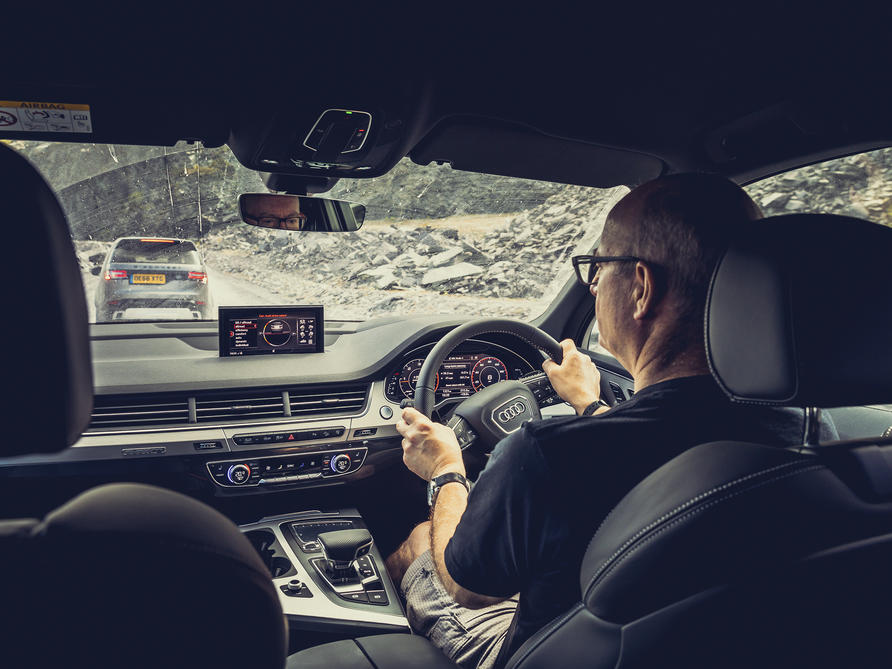
Its proportions are different from the other two because the engine bay is designed for a transverse four. This shifts the windscreen forwards and divides the overall length into a more favourable ratio of cabin space to under-bonnet mechanisms. The other two have longitudinal engines.
Is a four-cylinder diesel enough to propel the kinds of loads these cars shoulder? The Volvo’s little 2.0-litre has two turbos and a device called PowerPulse to store puff in a pressurised can until needed to reduce lag. There’s an eight-speed auto and 4WD. This car has an optional adaptive air suspension kit. It works: even on this R-Design Package’s low-profile tyres, it has a smoother ride than a steel-sprung V90 estate on airier tyres. Volvo’s car and SUV run almost identical platforms, which tells you something about the XC90’s off-road commitment.
Against the Volvo’s 235bhp, the Land Rover fields a V6 of 258bhp. But negating that 10 per cent power advantage is 10 per cent more weight, and so the Land Rover ends up slightly the least accelerative here. The Land Rover has air suspension too, as standard.
Top Gear
Newsletter
Thank you for subscribing to our newsletter. Look out for your regular round-up of news, reviews and offers in your inbox.
Get all the latest news, reviews and exclusives, direct to your inbox.
Like the Volvo, the Audi uses a car platform, but it has more upgrades for SUV duty. This one runs a 268bhp V6, and its weight matches the Volvo. So it’s comfortably the liveliest. Our test car also has optional four-wheel steering for city agility and high-speed stability. The air suspension box is also duly ticked.
Variable-height air springs are handy in this sort of vehicle: they compensate for load, and they can be raised over rough terrain and lowered at speed. All three have hill-descent control, but the Discovery has a universe of other off-roading software and hardware up to and including a low-ratio transfer ’box and active rear diff.
Each of the trio’s basic proportions bear strongly on their internal roominess. The Audi is low: it has a shallow dash and you look out through shallow side glass. By the same token, there’s amazingly little cabin storage – nothing worth having beneath the front centre armrest. In the same location, the tall Discovery carves out a bin deep enough to swallow iPads upright, and adds hidden cubbyholes in the front console.
As for seats, the Audi is roomy for five, but the third-row consignees had better be children, since they get no legroom at all unless the row-two folk slide their seats forward a bit. All three cars have sliding second rows, so passengers can divvy up the legroom according to who complains loudest.
The Audi’s boot is also as shallow as the Q7’s general proportions imply and has no spare wheel under it. The XC90’s third row is OK for short-ish adults, though they need to be spry to get in there. Behind them is a decent boot, even in seven-seat mode.
All the Volvo’s second-row seats fold manually, but it’s an easy operation. The Audi has manual row-two folding but it’s motorised for row three. All the Discovery’s back five seats can be folded electrically, under control of either local switches, the front touchscreen or – if you are given to pointless exhibitionism – using an app on your phone.
The Audi Q7 is easily the best to drive quickly and has a Swiss-watch cabin
The Land Rover’s row-two and row-three seats are the roomiest, and they have a glassy view out too. But having given over space to the people, the Disco has a pretty small boot in the three-row configuration. There’s no longer the split tailgate for picnicking at Henley, although you do get a fold-down flap instead and a curry hook – strong nods to its maker’s local food ’n’ beverage culture, just as a Porsche 911’s front boot is carefully dimensioned to ingest, upright, a Swabian beer crate.
Sitting in the front, the Audi’s dash and controls rock the firm’s customarily zealous attitude to material and constructional quality. The metal switches snick like a Leica’s shutter, the graphics are clean and responsive, the surface finishes butt against each other with smug snugness.
We love the Volvo’s dash for its visually relaxed Scandi lines and surfaces, although the R-Design version’s metallic finishers and black leather seem to be over-enthusiastically aping the Germans: we’d spec open-pore wood veneer and tan leather.
But anyway, the Audi and especially Volvo’s front cabins are consciously similar to their saloons and estates. Not the Discovery’s. Land Rover doesn’t make cars – not ones that aren’t Jaguars anyway – so the Disco’s cabin always reminds you you’re in an SUV. The elevated seat and deep windows are part of it, but so are the chunkier shapes of the dash and console superstructure.
Beyond those for altering the XC90’s speed and direction, Volvo famously loads almost all controls onto its huge touchscreen. You’re stroking and fondling the thing endlessly. It all seems rather enchanting at first, and to an iPad-native generation makes perfect conceptual sense. But when your arm is being bounced around by the car’s motion on the road, it can be surprisingly hard to jab at the exact part of the screen you want, causing too many mis-inputs.
Audi’s MMI divorces the input device from the display, but that device is so logical and finger-friendly that after you’ve had a brief time to bed-in with it, control is quick and natural, and takes your eyes off the road for less time than the Volvo.
The Land Rover also uses a touchscreen. For a decade, LR has lagged the opposition in screen graphics and response and general usability, but this one is level-pegging (and the Velar’s multi-screen system shows JLR has the capability to do a leapfrog). Anyway, the Discovery has nice hardware switches for climate control and its more important chassis and transmission functions: you raise and lower the air springs on a dedicated switch, while the Audi requires a menu dive.
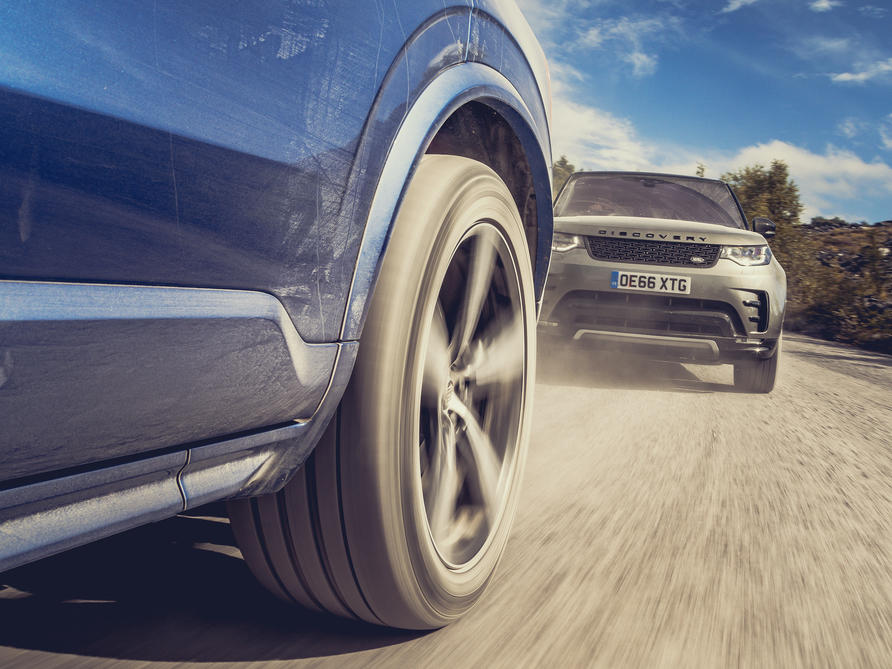
On the road, too, the Land Rover has the most distinct nature. It’s heavy and its motions are soft. The engine’s refined shove doesn’t need revving and its automatic gearbox plays its part fusslessly. Sending the Discovery through corners, as with accelerating or braking it, can be very serene, as the steering is accurate and the body roll progressive.
But it can’t disguise its height, weight and softness: roll and pitch are always significant, so you need plenty of anticipation and smooth inputs or it all gets a bit drunken-sailor. It tracks well on a motorway and stays pretty quiet. The ride is supple, but sometimes you get an underlying commotion as all that heavy off-road stuff shudders about.
Volvo’s efforts are more like a car’s. If not a terrifically good car. The four-cylinder engine is hoarse and its transmission indecisive, so you’re often using the paddles to give it a hint. After the Land Rover, it feels agile through bends, with less roll and body heave. The air suspension generally does a good job over big bumps but lets a bit of sharp harshness get through to you, and the R-Design Pack’s shallow tyres kick up a lot of noise.
It’s a good motorway car, though. Can you trust Volvo’s Pilot Assist lane-keeping and radar-following gizmos? We suspect people mostly activate these to give themselves a few two-handed seconds to open a sandwich pack at 70mph.
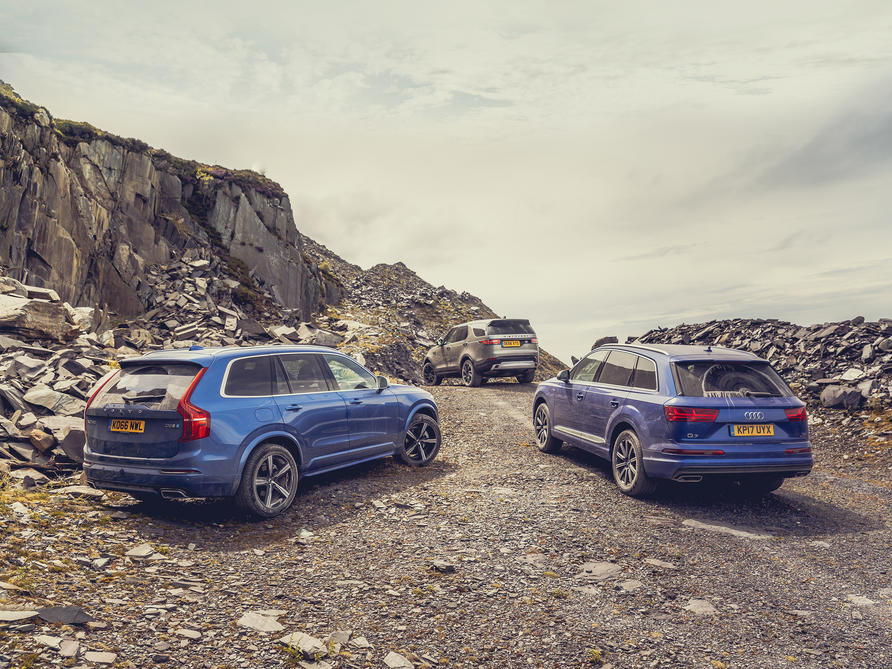
The Audi has a terrific and muscular V6 engine, good transmission, and lots of get-up and go, plus strong progressive brakes. It’s the only car here you can send through a set of corners with any sense of enjoyment.
It rolls little, and you can feel the four-wheel steering option doing its thing, cancelling understeer, helped by what feels like a rearward power balance. It doesn’t ride badly, either: there’s less harshness than the Volvo and less of the LR’s unsprung-mass shudder.
So the Q7 is easily the best of the three to drive quickly and has a Swiss-watch cabin. Down a B-road, you look at the speedo and think, “That fast eh?” whereas in the others you think, “That slow?” Even so, it ranks third here. It doesn’t have a distinct enough identity. It doesn’t do the seven-seat thing convincingly and looks dull and flabby from the outside. It’s lost, in the visual and practical senses, between an A6 Allroad and a proper family SUV. Great execution, dodgy concept.
The Volvo throws itself into family life and doesn’t pretend otherwise. No off-roading hardware – just a dose of 4WD traction for mud and snow activities. No driving sportiness, because if you went on the nation’s B-roads like the Audi encourages you to drive, rows two and three would be awash with vomit.
Frankly that’s going to be enough for most people. And it costs less to buy and fuel than the Land Rover. But if you really want the towing, the off-roading, the extraordinary sense nothing can defeat you, all swaddled in comfort and refinement, there’s nothing like the Disco.
Really, then, before a definitive decision, you need to be honest about what you need and who you are. And we can’t help you there.
Trending this week
- Car Review
BMW iX3








